Let’s take a look at some of the dung you may be finding in your yard and see what types of wildlife are living near you.
Rabbit
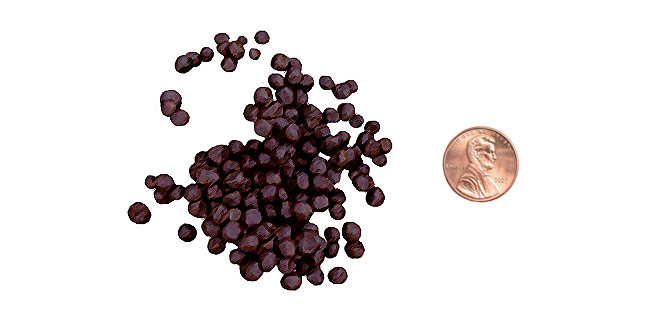
Most likely those little balls of poop you are finding on the ground are coming from wild rabbits roaming around your neighborhood. (Penny is used for scale). These balls (called pellets) is similar to the appearance of peppercorn, although with a smoother surface. They are dark brown, spherical, 5-8mm in diameter, and somewhat hard & compact. Rabbits are far from discreet as you’ll often see piles of these pellets scattered across your backyard.
Because of this, lagomorphs have a unique digestive system that allows them to produce two types of droppings – fecal pellets (as discussed earlier), and cecotropes. Cecotropes are made from the undigested foods that are passed from the rabbit, in which they then reingest! That’s right, bunnies (including domestic) will actually eat its own poop on a daily basis… without you even knowing.
The cecotropes are produced in a portion of the rabbit’s digestive tract (called the cecum) where bacteria converts the organic material into vital nutrients. It is then discharged as one single piece bearing a similar appearance to that of a blackberry. This essential item to the rabbit’s diet is often hidden and quickly gobbled up as they don’t want to share such a yummy treat!
Deer
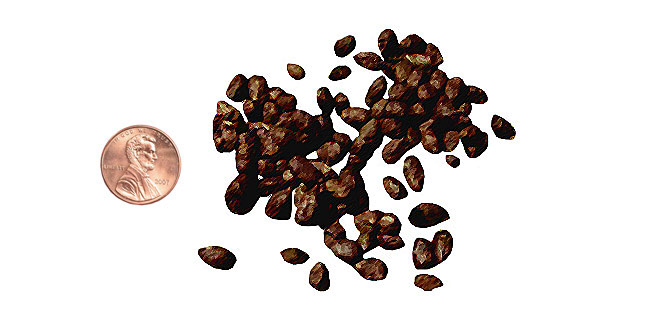
Deers also output small round pellets, similar to those produced by rabbits, but more oval in form, having a slight point at one end, and larger with a 2-3 cm diameter. And like rabbits, deer constantly graze on vegetation leading to a production of several hundred pellets over at least 10 bowel movements per day!
Turkey
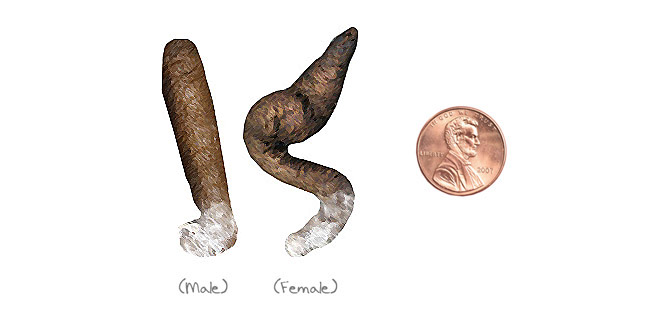
Turkey scat is brown, cylindrical, and relatively small with an average diameter of 1cm and length of 3 inches. The reason why turkey poop is so neatly packed together despite the amount of seeds and nuts that they eat is because their gizzards do an incredible job at pulverizing anything hard that they consume, greatly easing the digestion process.
You’ll also notice a white coloring or cap at the end of each dropping. This is because, like all birds, turkeys output both their liquid waste and solid waste simultaneously from the same opening. The uric acid that passes through their kidneys forms chalky-white urate crystals that appear on the very end of the excrement (this is more apparent in those white splats you see on your car made from smaller birds).
Raccoon
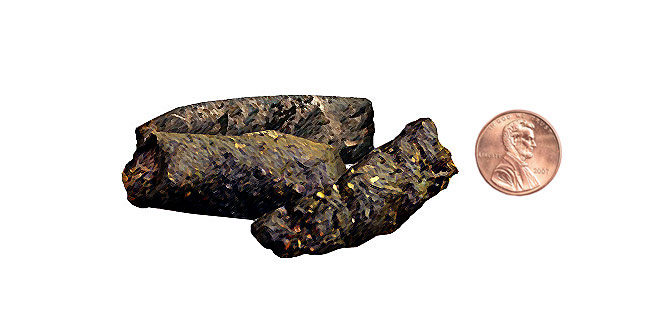
Raccoon droppings are dark brown/black pieces with a tubular shape, blunt ends, and an average size of 1/2-inch diameter with 2-3 inches length (fairly fat and short). It is often filled with remnants of what they have eaten recently such as undigested pieces of corn, berries, or seeds.
Raccoons are latrine animals meaning they like to pick a specific (often recurring) place to go rather than just squatting down whenever nature calls. If you are finding poop (that you know is not your dog’s) in the same spot every day, you might have a raccoon visiting you at night.
Squirrel
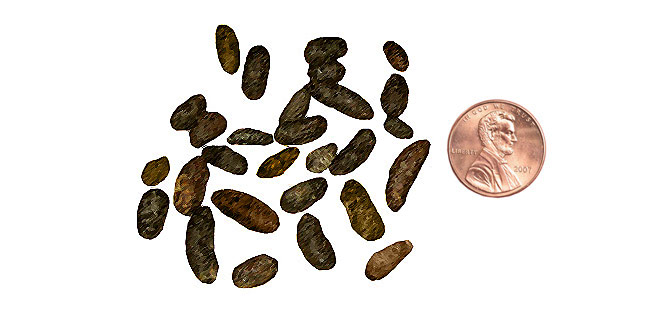
Squirrel droppings are quite tiny (less than 8mm in diameter and about 1cm long), oval shaped with rounded tips, and slightly bulged in the middle. The pieces start out with a dark brown color which lightens in tone as they age. Squirrel poop will often be found in clusters, that is if you can find them at all. Due to their small size and lighter colors, it makes it very difficult to spot in the soil.
Rats/Mice
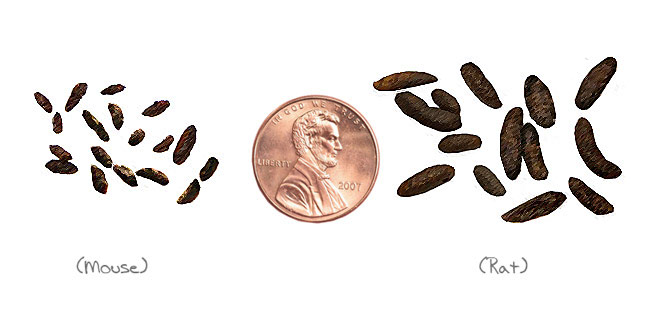
Of course the smallest droppings on our list stem from mice and rats – with rat pellets having an average 3mm diameter with a 10mm length and mouse droppings about half that. Each pellet is comparable in size and shape to a grain of rice – oblong with pointed ends- and is a shade of dark brown. Mice and rats can produce 50-100 droppings per day which are scattered everywhere rather than one place – so if just one is trapped in your attic, it can get ugly pretty fast.
Fox
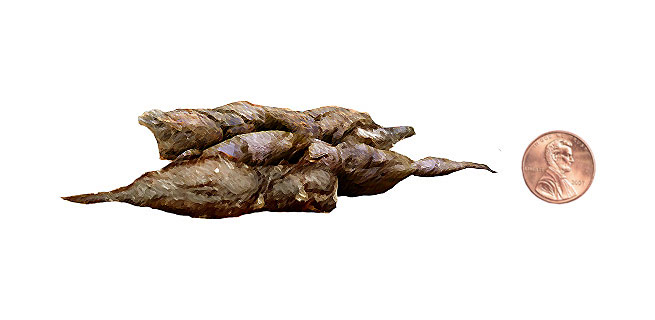
Fox scat is approximately 1/2 inch in diameter & 2-4 inches, dark brown, and can contain hair, bones, insects, seeds & undigested fruits. Fox scat often has a ropey, tapered, semi-segmented shape and gives off a distinct skunky/musky smell.
Coyotes
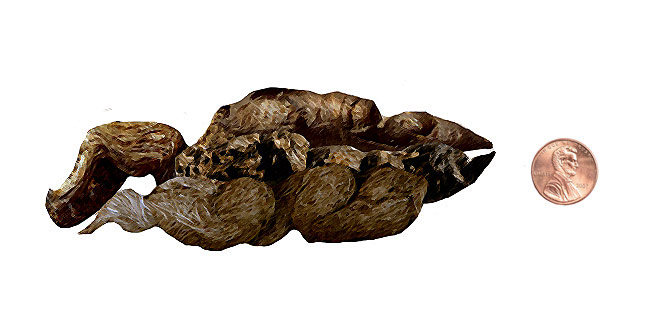
Coyote scat closely resembles scat from a fox except bigger. The segmented pieces are quite long in size with 4-6 inches in length and about ¾ inch in diameter. The dung is dark brown, tapered, often twisted, and contains large amounts of hair from their recently digested prey.
Garter (Garden) Snakes
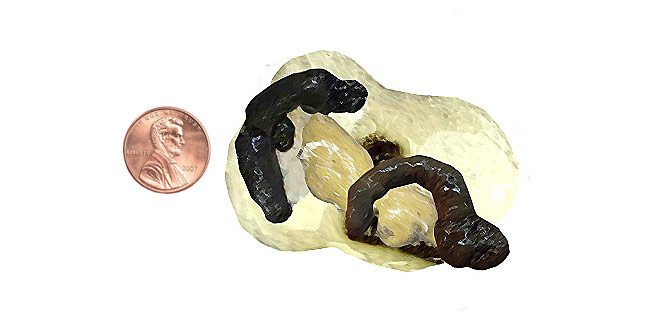
Garter snakes, like all snakes, are carnivorous and will eat whatever small creatures they are able to overpower such as worms, lizards, frogs, and mice. Their feces may reveal remnants of the latest victim, containing undigested fur and nails. While still maintaining a somewhat log shape, snake scat will have a more mushy, slimy look regularly seen with a white smear though it. This is the urea smear as snakes, like birds, possess a single opening where both the fecal matter and uric acid are excreted together. An adult garter snake will often produce droppings that are an inch or less in diameter although this can vary greatly due to snake’s size and what they recently ate.
Bear
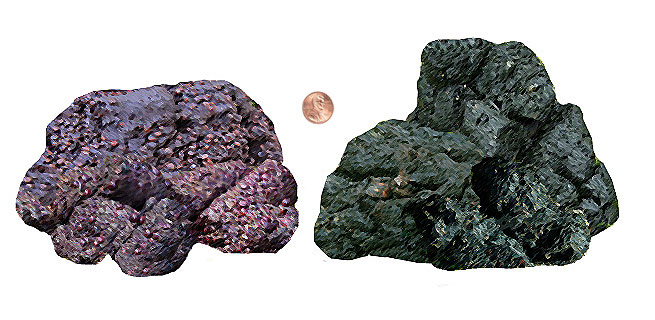
A bear’s stool can be compact, loose, or watery depending on their recent diet, but one thing is for sure – their poop will be far larger than anything you else find, with just one dropping weighing around a pound. Color ranges from the typical dark brown, to green (when grasses have been heavily eaten), to a pink/purple hue (when a high number of fruits and berries have been ingested.
Bears are primarily vegetarian and munch on a variety of fruits and plants depending on the season, but we all know that bears can become scavengers in more developed areas – and when it comes to our trash, anything goes. Because of this, bear poop can also contain bones, food wrappers, and an assortment of debris.
Worried about your dog eating wildlife poop? Ensure that all excrement in your yard (whether from your dog or not) is scooped on a regular basis. It is possible for your dog to contract worms or parasites from eating some of the droppings. If you fear this to be the case, make sure to monitor your dog for several weeks for any signs of vomiting, lethargy, or stomach issues. You may want to contact your veterinarian to see if further testing should be performed.

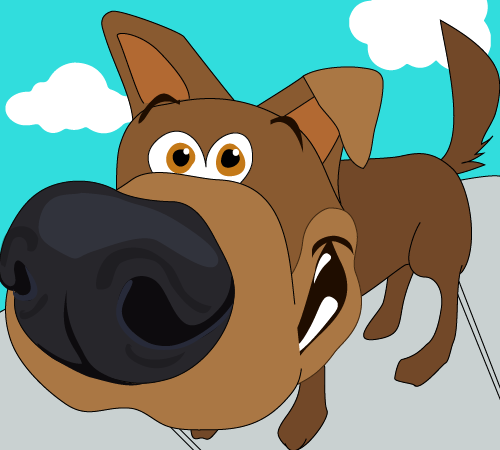 How is a Dog’s Sense of Smell Different from Ours… and Why?
How is a Dog’s Sense of Smell Different from Ours… and Why?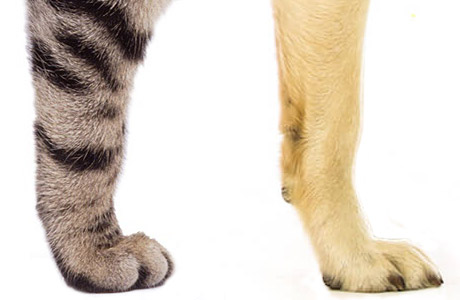 Why Don’t Dogs Use Their Claws (and cats do?)
Why Don’t Dogs Use Their Claws (and cats do?)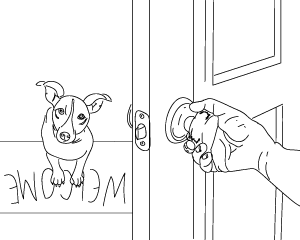 Top 5 Dog Superstitions with Possible Explanations
Top 5 Dog Superstitions with Possible Explanations